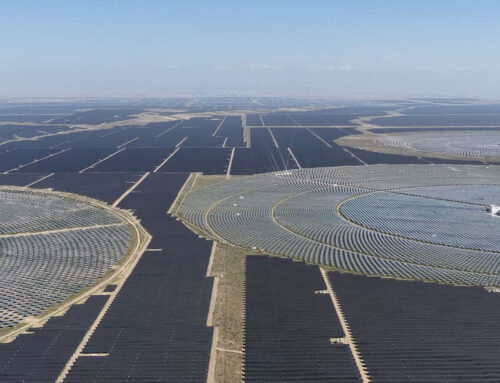Geothermal Power Emerges as Trump’s Favorite Clean Energy
October 12, 2025
One of the few renewable energy sources that the Trump administration has not yet criticised is geothermal power, as companies across the United States continue to develop innovative geothermal projects with financial support from Biden-era policies. The sweeping budget legislation that President Trump signed in July preserved most key tax credits for geothermal power. Bipartisan support has encouraged several energy companies and startups to invest heavily in research and development into advanced geothermal operations in recent years, with promising results, giving hope for future clean energy production.
People have been tapping into geothermal energy from natural heat sources worldwide for centuries. Over the last fifty years, energy companies have tapped into geothermal sources using machinery to access harder-to-reach reserves. To achieve this, companies drill a borehole up to several kilometres deep, where the rocks are around 200°C, and inject water and sand at high pressure. This creates fractures in the rocks, which increases their permeability and produces a reservoir of hot water that can be extracted via a second borehole for the water to be used to generate electricity.
Geothermal energy contributes just 0.4 percent of the U.S. energy mix, largely due to technological and geographical constraints to accessing geothermal reservoirs. Existing plants depend on naturally occurring reservoirs of hot water and steam, in regions such as Northern California and Nevada, to power turbines and generate power. However, companies are now exploring new ways to access geothermal resources using techniques developed for oil fracking and innovative new methods to reach harder-to-access reservoirs in unconventional regions.
Sage Geothermal is now using heat and pressure to generate more power than conventional extraction methods through its cycle-based heat recovery approach. The company’s CEO, Cindy Taff, told Forbes, “By using the natural elasticity of the rock, we can bring hot water to the surface without pumps. Unlike traditional approaches, we maintain pressure in the system rather than venting it at the surface, and we hold open fractures with pressure instead of adding bridging materials like sand or proppant. These innovations reduce friction and energy losses, boosting net power output by 25 to 50 percent compared to other next-generation geothermal technologies.”
In August, Sage announced it was partnering with the international geothermal energy developer Ormat Technologies to roll out its next-generation technology at an Ormat facility in either Nevada or Utah. This is expected to help Sage speed up the development of its first commercial power-generation facility by around two years. Taff said, “For us, the ability to scale faster with Ormat is huge… But it’s also a great opportunity for Ormat to reach a deeper [geothermal] resource than what they’re targeting now.”
Related: Don’t Mess with Texas: Organized Oilfield Theft Triggers Statewide Response
In September, Sage signed an agreement with the geothermal startup Fervo Energy to advance their geothermal activities. The two companies have both invested heavily in research and development into alternative geothermal extraction methods and could work together to advance this work. Fervo recently signed a deal with tech giant Google to provide it with clean power, while Sage has completed an agreement with Meta.
Houston-headquartered Fervo Energy was approved to deploy 2 GW of geothermal power in Beaver County, Utah, by the Department of the Interior last year, with its facility set to begin generating power in 2026. The company uses an Enhanced Geothermal Systems (ESG) proprietary technology to drill horizontally into geothermal reservoirs, allowing it to access multiple wells from a single location and showing promise for greater unconventional geothermal energy generation.
In September, the energy technology company Baker Hughes was contracted by Fervo Energy to supply equipment for five of its power plants in the Cape Station project in Utah. The plants are expected to produce 300 MW of electricity once fully operational, enough to power about 180,000 homes. Baker Hughes will supply engineering and manufacturing equipment as well as turboexpanders and the BRUSH Power Generation generator.
The firm’s CEO, Lorenzo Simonelli, said, “Geothermal power is one of several renewable energy sources expanding globally and proving to be a vital contributor to advancing sustainable energy development. “By working with a leader like Fervo Energy and leveraging our comprehensive portfolio of technology solutions, we are supporting the scaling of lower-carbon power solutions that are integral to meet growing global energy demand.”
In September, Bill Gates visited Fervo Energy’s Cape Station project alongside Senator John Curtis. He described the company’s horizontal drilling method as a “truly innovative approach” and discussed the role companies like Fervo will play in maintaining America’s energy independence. The founder of tech giant Microsoft said, “Geothermal is one of the most promising ways to deliver clean energy that’s reliable and affordable.”
As the outlook for renewable energy in the United States becomes more uncertain, following the Trump administration’s attacks on solar and wind power, the geothermal energy sector appears to have maintained the backing of the government as several companies continue to expand operations. Investments in innovative geothermal extraction technologies show great promise for the commercial rollout of new operations across the country.
By Felicity Bradstock for Oilprice.com
More Top Reads From Oilprice.com:
- Washington Targets China’s Teapots in New Oil Crackdown
- Crude Oil Futures Rise on Supply Data and OPEC+ Outlook
- Guyana Gains French Support Amid U.S. Pressure on Venezuela
Search
RECENT PRESS RELEASES
Related Post




